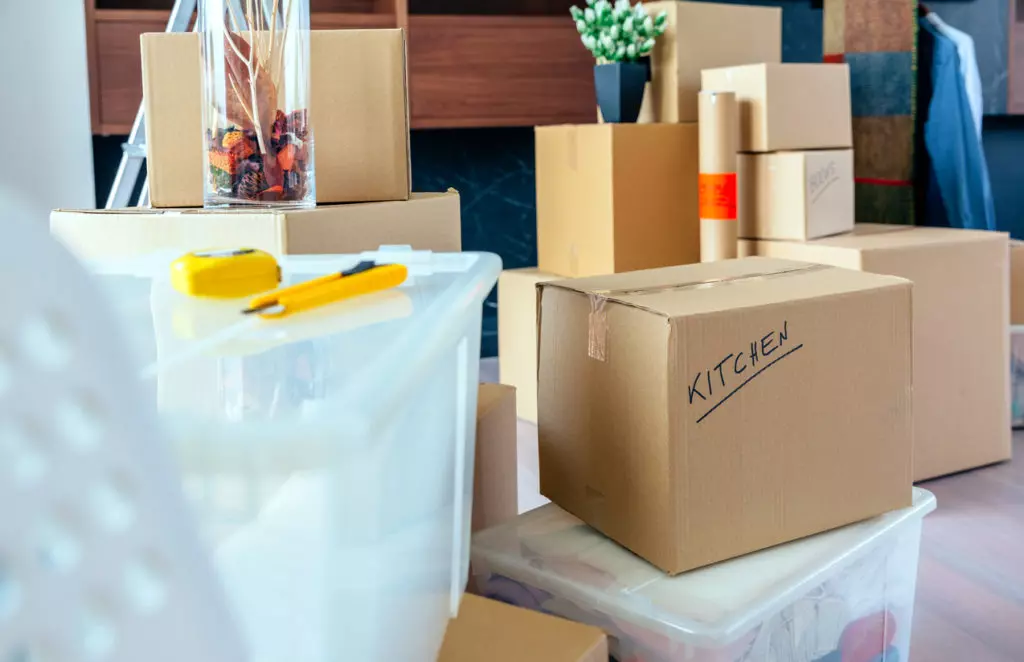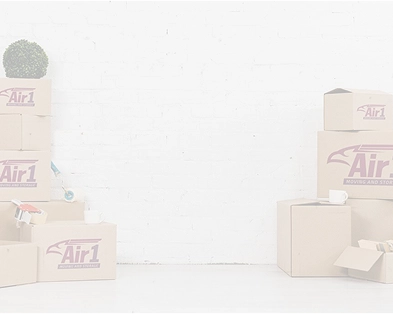Pack Kitchen Equipment For A Move Like The Pros

Need to pack kitchen items for a move? With a little strategy and organization, it's a piece of cake to move without breakages or unnecessary headaches. Here's the definitive guide on how to pack up a kitchen for moving, from glassware and plates to the best way to pack kitchen knives.
Do You Really Need That?
As with other parts of the home, when you pack a kitchen there's a lot of stuff you're better off getting rid of.
Whether you donate, sell or dispose of it is up to you, but everyone has items in their kitchens right now that they'll never use again. It's just not worth packing kitchen appliances or tableware that won't be put to good use in your new home.
Be Scrupulous With Expired Food
If you've suffered from any type of infestation in your current home, moving is an excellent opportunity to leave pests and their eggs behind for good. When you pack kitchen cupboards, keep a close eye out for signs of moths and other bugs.
Maggots, webbing or lightweight grains suspended from the tops of containers are dead giveaways that you're not the only one eating your food.
If in doubt, toss it out. When you're packing kitchen containers that contain pests or their eggs, they'll just set up shop in your new home too.
How Many Boxes Do I Need To Pack A Kitchen?
First, you'll need to get several boxes of different sizes. Every kitchen is different, but the average kitchen needs about 12 small and medium sized boxes, plus extra large ones to pack kitchen appliances that are bulky.
More is by no means merrier when it comes to loading boxes in a kitchen. It's tempting to fill big boxes full of heavy items, but this just increases the likelihood of the boxes breaking.
Need packing supplies? Just let us know.
Label Your Boxes
Don't rely on your memory to keep track of what went where. When you keep an inventory and label your boxes, you'll be glad of it later.
Before the move, you may have to unexpectedly locate an item that you've already packed up. It's much less stressful to be able to do it in an instant. Whether online or in a notebook, label the room the box is going to as well as its general contents.
How To Pack Kitchen Supplies
Here's how to pack kitchen equipment the smart way.
Keep A First Day Box
If you're doing your own unpacking, you'll need some fuel. Packing kitchen essentials in one box makes it simple. Think easy to prepare food plus a few sets of cutlery and plates.
Use Packing Paper
Packing paper is more durable and protective than regular paper, so pick some up before you begin to pack kitchen breakables.
Can't I just use newspaper? Yes, although newspaper can leave prints on your kitchen supplies, and cleaning that off is one more task you'll have to tackle while getting settled in your new home.
Packing Food
You probably use your kitchen every day. However, you can start ahead of moving day if you pack ingredients that you don't use often first.
Think dried beans, rice, pasta, or cans of food you're not going to have time to eat before you go.
Packing Plates
The steps may surprise you.
- Line a box with packing peanuts, bubble wrap or scrunched up paper.
- Wrap each plate in a separate piece of packing paper.
- Place each plate vertically in the box.
- Cover the plates with padding and seal the box.
We know what you're thinking… Vertically?!
Yes, that's right. Plates are tougher if they get hit on their sides so there's less chance of breakages this way.
Packing Glassware
The stakes are higher here, but it's similar to the steps for plates.
- Pad the bottom of the box as outlined above.
- Wrap up each glass individually.
- Stack them one resting inside another if possible.
- Leave glasses with a stem till last to wrap, and place these at the top of the box.
- Pad the space at the top and seal.
You'd be forgiven for losing hope somewhat at this point because most people don't realize that packing each individual item is best.
Don't worry.
Air1 Moving & Storage offers a comprehensive packing and unpacking service to get your kitchenware from A to B in one piece.
Pack Kitchen Knives Securely
If you already have a knife block, that's perfect. Simply secure the knives inside the block with tape and wrap them all together. Then, place them in a sturdy box and seal them firmly.
If not, lay the knives on packing paper or a stiff piece of old fabric that you don't mind getting cut. Roll the knives up so the blades are inside and fasten the bundle together with strong tape.
In all these cases for fragile and potentially dangerous items, label your box or package appropriately for safe transit and unpacking.
Packing Kitchen Appliances For Moving
Here's the best way to pack a small or medium-sized kitchen appliance.
- Start by covering the power cord with packing paper.
- Then, cover the whole appliance in a sheet of packing paper to prevent scratches.
- Place it in a box lined with packing peanuts and fill it up with more peanuts and paper for padding.
Putting it into storage? Don't forget to remove any batteries first.
Large Appliances
Moving with refrigerators and dishwashers? Leave it to the pros because it's easy to injure yourself or damage the item when moving heavy appliances if you're not properly trained. Moving day is among the absolute worst days to have an injury set you back.
Call Air1 Moving & Storage To Pack Kitchen Items And Unpack Them In Your New Home
With over 20 years in the moving and storage industry, we know just how to pack up a kitchen for moving and get your belongings to your new home safely.
Our professional team is waiting for your call at (866) 750-3386. Alternatively, please fill out our quick form, or email us at info@air1moving.com.
CATEGORIES























